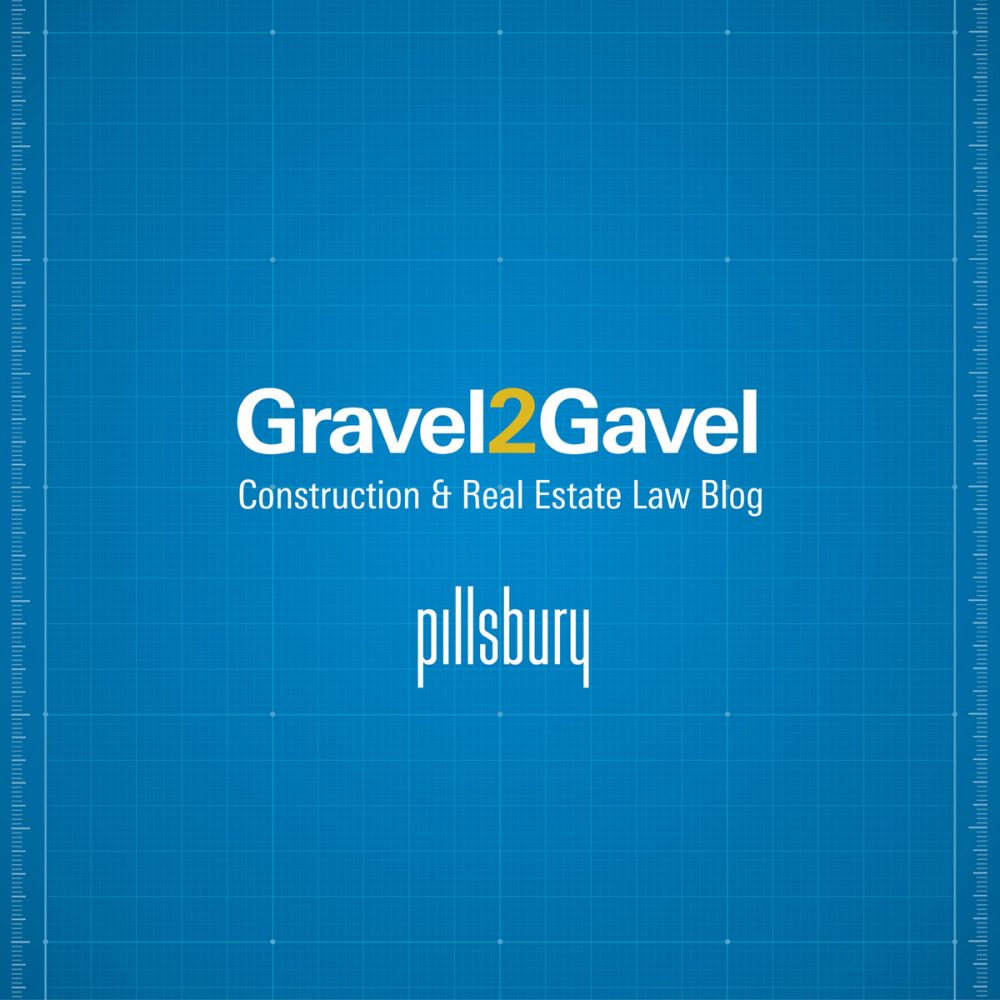The First Five Months of the Federal Circuit’s 2024 Precedential Rulings
“The Federal Circuit’s patent law jurisprudence continues to be dynamic and constantly evolving. Patent practitioners, prosecution attorneys and litigators would be well-advised to continually monitor new decisions.”
The U.S. Court of Appeals for the Federal Circuit continues to shape the patent law landscape each year with its precedential opinions. This year has been no exception, as the court issued a total of 30 precedential opinions on patent issues in the first five months of 2024. In this article, we examine nine significant opinions covering five areas of patent law.
KSR Continues to Rule Obviousness
Seventeen years after KSR Int’l Co. v. Teleflex Inc., 550 U.S. 398 (2007), the Supreme Court’s decision is no less relevant in guiding obviousness jurisprudence. Two Federal Circuit decisions illustrate KSR’s enduring impact and provide cautionary tales about the risk of deviating from KSR’s mandate.
In LKQ Corp. v. GM Global Tech. Operations LLC, No. 2021-2348, 2024 WL 2280728 (Fed. Cir. May 21, 2024), the en banc court overruled its Rosen-Durling test for assessing design patent obviousness as “inconsistent with Supreme Court precedent” of KSR (2007) and Whitman Saddle (1893). The Rosen-Durling two-part test requires 1) a primary reference “basically the same” as the claimed design, and 2) that any secondary references be “so related” to the primary reference that features from one would suggest application to the other. Id. at *6. The court held that KSR overruled or abrogated this test as “impos[ing] limitations absent from § 103’s broad and flexible standard.” Id. at *6-*7. Instead, the correct test for design and utility patents is the same: the four-factor test outlined in Graham v. John Deere Co., 383 U.S. 1 (1966). Id. at *7-*11. Like KSR, this decision lowers the standard for finding design patents obvious, which will significantly impact both the prosecution of and litigation on design patents.
In Janssen Pharms. v. Teva Pharms. USA, 97 F.4th 915, 927-31 (Fed. Cir. 2024), the Federal Circuit vacated and remanded a finding that a schizophrenia treatment patent was non-obvious. The court first held that the district court improperly imported a “generalized” use limitation (i.e., requiring a dosing regimen for a general population of patients versus the recited “‘a psychiatric patient”) in contravention of KSR’s holding that “[w]hat matters is the objective reach of the claim.” Id. at 925-26. It observed that the district court improperly conflated motivation to develop the claimed invention with the considerations for obtaining FDA approval, which led to erroneous analysis on both claim scope and prior art teachings. Id. at 928-29.
The Federal Circuit also found that the district court “ran afoul” of KSR by failing to consider multiple references’ interrelated teachings, background knowledge of a person of ordinary skill (“POSA”), and a POSA’s ordinary creativity. The court faulted the lower court’s “siloed and inflexible approach” of examining the prior art’s disclosures in isolation rather than, as KSR mandates, in context and in combination. The district court’s approach led it to “inflat[e] the significance of minor variations between the prior art and the claims.” Id. at 928.
Equitable Defenses Make a Comeback
Equitable defenses have become increasingly uncommon, requiring particular fact patterns and high burdens of proof. In Luv N’ Care, Ltd. v. Laurain, 98 F.4th 1081 (Fed. Cir. 2024), however, the Federal Circuit breathed new life into two such defenses: unclean hands and inequitable conduct. The decision signals a more flexible approach to these defenses that will encourage accused infringers to plead these defenses.
Unclean hands bars relief if the party’s misconduct constitutes “unconscionable acts” that bear a “necessary and immediate connection” to the relief sought. In Luv N’ Care, the court affirmed an unclean hands finding based on the patent owner withholding relevant patent applications, blocking key discovery, and providing false or evasive testimony. Id. at 1095-96. Two aspects of Luv N’ Care illustrate this defense’s reach. First, although the misconduct occurred in discovery limited to the utility patent, the court found no error in the district court’s dismissal of design patent and trade dress claims because “[a]fter five years of litigation, [the patent owner’s] conduct with respect to its pursuit of the [utility patent] infringement claim [could not] be cordoned off from its conduct with respect to [the] other claims.” Id. at 1096. Second, the Federal Circuit noted unclean hands alone was sufficient to declare the patent challenger the “prevailing party” for awarding attorneys’ fees under 35 U.S.C. § 285. Id. at 1105-06.
But Luv N’ Care’s most intriguing holding relates to inequitable conduct. Successful inequitable conduct defenses have been rare since Therasense v. Becton, Dickinson & Co., 649 F.3d 1276, 1290 (Fed. Cir. 2011). The Therasense decision abrogated the “sliding scale” approach to the materiality and intent requirements (i.e., intent can be inferred from materiality, and vice versa) and required that each element be proven by clear and convincing evidence. Id. In Luv N’ Care, while the court did not revisit the Therasense test itself, its reasoning for remanding the district court’s finding of no inequitable conduct signals a looser approach to both materiality and intent.
On materiality, the Federal Circuit held that disclosure of prior art to the U.S. Patent and Trademark Office (USPTO) did not excuse misrepresentations regarding the art, particularly where the patentee withheld a video that would have exposed the misrepresentations. Luv N’ Care, 98 F.4th at 1097. The court explained that the correct evaluation should be “whether the PTO’s patentability decision may have differed if [the patentee] had described [the prior art] accurately and had disclosed the withheld video to the PTO.” Id. at 1097-98. The court further noted that the but-for test for materiality is not exclusive and faulted the district court for failing to determine if the patentee’s misrepresentation was per se material (i.e., “amount[ing] to egregious misconduct”). Id. at 1097 On intent, the court took issue with the district court’s analysis that only “considered [the patentee’s] individual acts of misconduct in isolation” and failed to consider whether deceptive intent could be inferred from the misconduct “in aggregate” as demonstrating “repeated attempts to avoid playing fair and square with the patent system.” Id. at 1098.
‘Domestic Industry’ Must Be Tied to Patent Scope
Before the International Trade Commission (ITC), a complainant must meet the economic prong of the domestic industry (“DI”) requirement by showing significant/substantial investments in plant, equipment, labor, capital, engineering, R&D, or licensing “with respect to the articles protected by the patent” (i.e., “DI products”). 19 U.S.C. § 1337(a)(3)(A)-(C). DI disputes frequently arise where the asserted patents cover only certain aspects of the DI products or different sets of products. Two Federal Circuit decisions illustrate the intricacies and uncertainties of the analysis, as well as the importance of tying the DI analysis to claim scope.
In Roku v. ITC, 90 F.4th 1367 (Fed. Cir. 2024), the asserted patent only covered the QuickSet software installed on the DI products (i.e., Samsung TVs). The Commission found that the DI requirement’s economic prong was met based on the complainant’s investments in engineering and R&D in the QuickSet software. Id. Respondent argued that, by focusing on the embedded software, the Commission failed to require the complainant to allocate its investment to a specific DI product. Id. at 1372. The Federal Circuit rejected this argument because “a complainant can satisfy the economic prong . . . based on expenditures related to a subset of a product, if the patent(s) at issue only involve that subject.” Id. at 1374.
The Federal Circuit in Zircon v. ITC, No. 2022-1649, 2024 WL 2037162 (Fed. Cir. May 8, 2024) addressed a situation where 53 DI products practiced one, two, or three different patents. Id. at *3. The complainant relied on investment data aggregated across all 53 DI products. The Commission found that this aggregated approach failed to provide “an adequate basis . . . to evaluate the investments and the significance of those investments with respect to each asserted patent.” Id. at *2. On appeal, the Federal Circuit upheld the Commission’s determination, holding that “in cases in which the complainant’s product or groups of products each practice different patents, the complainant would need to establish separate domestic industries for each of those different groups of products.” Id. at *5. Nonetheless, the Federal Circuit noted that showing DI “without necessarily breaking out investment on a per-patent basis” remains possible “in an appropriate case” “provided sufficient evidence is presented . . . that the domestic industry requirement is met for each patent.” Id..
Data Manipulation Patents Continue Their Losing Streak on Patent Eligibility
Ten years after the Supreme Court’s landmark decisions in Alice v. CLS Bank and Mayo v. Prometheus, patent eligibility law is still criticized as confusing and inconsistent. The Federal Circuit continues to wrestle with the challenges of applying these precedents, and it has issued three precedential decisions to date in 2024. In each decision, the court found computer-implemented patents directed to abstract ideas and lacking inventive steps under the two-step Alice framework. AI Visualize, Inc. v. Nuance Commc’ns, Inc., 97 F.4th 1371 (Fed. Cir. 2024); Brumfield, Trustee for Ascent Trust v. IBG LLC, 97 F.4th 854 (Fed. Cir. 2024); Chewy, Inc. v. IBM Corp., 94 F.4th 1354 (Fed. Cir. 2024).
Notably, the claims in the decisions were directed to various types of data manipulation. The patent in AI Visualize claimed a web application which retrieved large, remotely stored “volume visualization datasets.” AI Visualize, 97 F.4th at 1374-75. The claims in Brumfield covered a computer-implemented method of graphing bids and offers. Brumfield, 97 F.4th at 860-61. In Chewy, the disputed technology identified relevant advertisements based on search results. Chewy, 94 F.4th at 1358. In each case, the Federal Circuit found the claims to be directed to an abstract idea (conversion of data, placing an order, and targeting advertising, respectively), and that the patentee did not claim any specific improvement to computer technologies themselves. AI Visualize, 97 F.4th at 1378-81; Brumfield, 97 F.4th at 868-71; Chewy, 94 F.4th at 1365-68. Accordingly, the three decisions continue a trend started with Elec. Power Grp. v. Alstom., 830 F.3d 1350 (Fed. Cir. 2016), finding that computer-implemented strategies of transforming and sorting data which lack specific improvements over well-known methods of using computers for long-standing human practices are ineligible for patenting.
Written Description Remains a Context-Specific Inquiry
The court added to a line of cases addressing adequate written description for claims reciting a range in RAI Strategic Holdings, Inc. v. Philip Morris Products S.A., 92 F.4th 1085 (Fed. Cir. 2024). The PTAB had found no adequate written description where a claimed range recites narrower values than those described in the patent specification. Id. at 1087-88. The Federal Circuit reversed. It first observed that there were at least five precedential opinions addressing similar circumstances with different outcomes. Id. at 1088-89. Those outcomes turned on whether the specification reasonably conveys to a POSA the narrower, claimed range, including whether “the broad described range pertains to a different invention than the narrower (and subsumed) claimed range.” Id. at 1089. The court explained that this “determination is highly factual and dependent on ‘the nature of the invention and the amount of knowledge imparted . . . by the disclosure,’” which render “[b]roadly articulated rules [] particularly inappropriate in this area.” Id. at 1091.
For example, the court in In re Baird, 348 F.2d 974, 982 (C.C.P.A. 1965) found that the claimed narrower range lacked written description support because it was directed to a new invention exhibiting advantages over the specification’s broader range without any guidance on how to reach the claimed range. In contrast, the Federal Circuit in RAI observed that the claimed vapor device involved “predictabl[e] [] electro-mechanical inventions,” and nothing in the specification indicates that narrower claimed range “changes the invention, whether as to operability, effectiveness, or any other parameter.” RAI, 92 F.4th at 1090.
Takeaways
As demonstrated by these opinions, the Federal Circuit’s patent law jurisprudence continues to be dynamic and constantly evolving. Patent practitioners, prosecution attorneys and litigators would be well-advised to continually monitor new decisions that may significantly impact their clients and practices.






